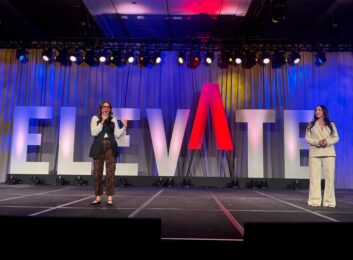In a world where experience costs and attendee expectations are rising, smart meeting planners will consider how to make the most of their content investment. Enter “Reflection Activities,” often described as “the connection between theory and action.”
Catalyze your Content
Prior to Covid, learning content was increasingly recognized as a driver of the perception of value for meeting attendees. During the ascent of virtual events, this perspective accelerated, because the content of events was where engagement was happening. Attendees craved the ability to be seen, heard and responded to in the chat, ask questions of the speaker, meet new people and network meaningfully. The goal was to discuss and learn together around shared challenges and ideate solutions collaboratively.
Content was recognized as a place where meaningful connection happens. With this increased awareness of content value, came a focus on content quality. The marketplace provided an initial proliferation of content that helped identify what made virtual content successful. Now, as face-to-face events return, we know that the days of old content delivery modes (think windowless conference rooms set theater style while audiences stare at a series of slides) are over. Meeting attendees want content experiences that are memorable, actionable and improve how they work and live.
Maximizing Return on Learning
Producing high-quality content experiences comes at a cost, and budget allocations are reflecting this. Event creators are investing more into interactive content features. This demonstrates the value of content—if content experience promise brings attendees to your event, the quality of that content experience delivery will drive retention and sharing.
See also: How to Produce Compelling Content that Drives Engagement
Consider then, the forgetting curve, the theory first hypothesized by Hermann Ebbinghaus in 1885—that without revision, our knowledge acquisition declines by 75 percent in the seven days following an event. Yikes! For event creators that can now place a dollar value on all that amazing designed content, this knowledge evaporation represents a 75 percent loss or reduction in their Return on Learning.
This is where Reflection Activities—perhaps once considered a fluffy, new-age, trick—are an important opportunity for event organizers to maximize their “return on learning”.
Think like an Educator
As both a content strategist and an educator of experience designers, I often leverage skills from the classroom to catalyze content for our clients. I will often ask—what do these students need? What kind of activities would respond to their learning style or lens on the world? What supporting materials are needed? What kind of questions will get them thinking?
Turn a teaching mindset towards conference attendees. Provide activities that support different preferences. Examples of past activities we’ve created include: fun visual layouts like storyboards to be filled in; audio excerpts with notable quotables; games that encourage sharing and discussion; providing questions that are unexpected, encouraging participants to make surprising connections and discoveries; or simply the act of reviewing notes with a study group.
The CEMA Example
A case study probably makes the point better than any technical description. To help the ideas ignited by CEMA Summit stay fresh and increase the likelihood of their integration into practice, Storycraft Lab provided attendees with reflection cards. We suggested they consider the prompts throughout the conference, on the flight home, or each morning with their cup of coffee or tea.
Card one asked that attendees select one big idea from each session they attended. Sounds simple, but it’s not easy to select just one big idea from so many! That’s the point of this Reflection Activity—the process of selecting means that we recall more than just the one idea in order to assess and prioritize.
Card 2 prompted attendees to recall a moment of discovery, and who shared that moment with them. A-ha content moments are enjoyable and that’s memorable— they are great for igniting meaningful dialogue with other attendees. We encouraged attendees to check in with the folks they shared those moments with.
Card 3 encouraged attendees to reflect on feelings rather than content specifically, and how those feelings might inspire an action. Because connecting with people emotionally is what helps to elevate the intellectual to something unforgettable.
Cards 4 and 5 were titled ‘Insight Igniters’ and drew a direct line between content and activation/application. The first prompted attendees to map out the connection between an inspiration, idea, and implementation. The next card provided a space where attendees could detail steps for each of the next three quarters.
Content to Action
Reflection activities promote synthesis, an essential part of concretizing information. Synthesis is the precursor to action, prompting thoughts on how the knowledge might be applied. Reflection activities help make content useful—the piece of the puzzle that elevates the value of the experience in the attendee’s mind.
Whether reflection activities are designed for individuals or groups, they are powerful community generators. Communities formed around content affinities promote 365 engagement, and a sense that meeting content supports personal growth trajectories. This community conversation in turn extends event awareness, driving future attendance—so it’s well worth investing in a strategist who can catalyze your content to maximize your return on learning.
Naomi Clare Crellin is the CEO of Storycraft Lab, an experiential engagement agency that provides consulting and audience design services to event, exhibit and experience planning teams. In addition to her work with Storycraft Lab, she is adjunct faculty in the NYU Masters Event Management Program.




